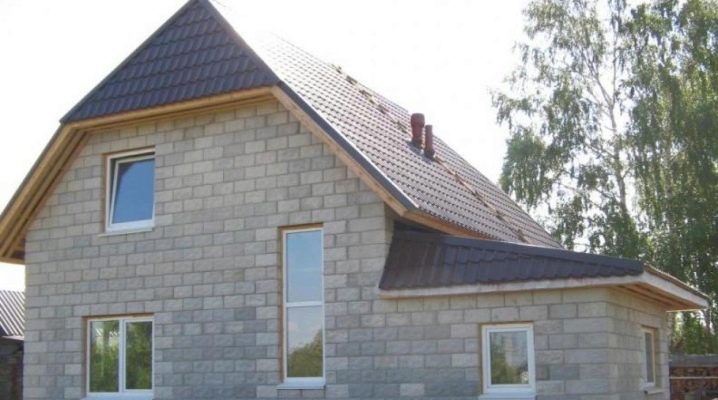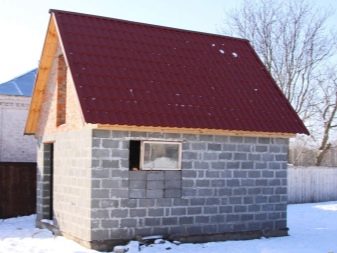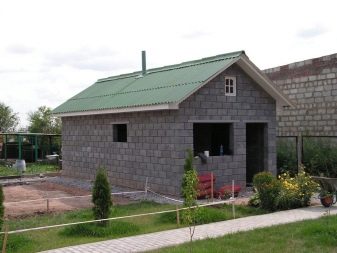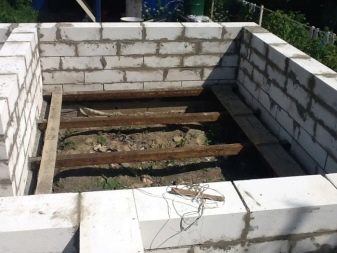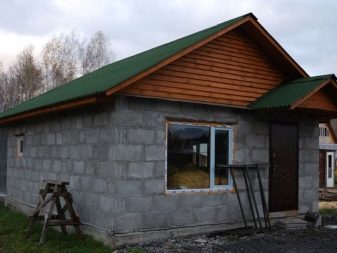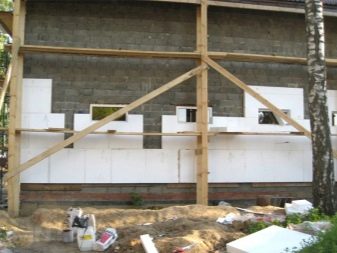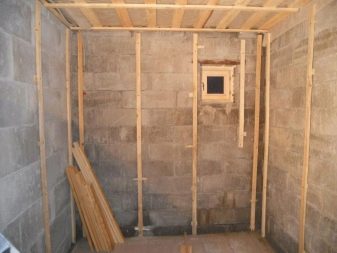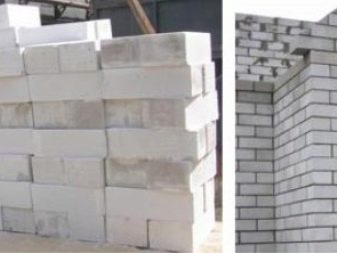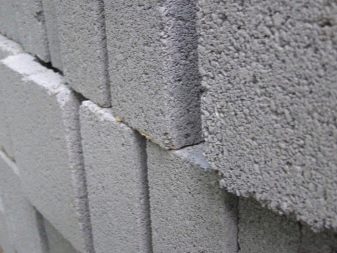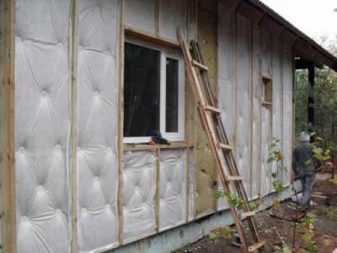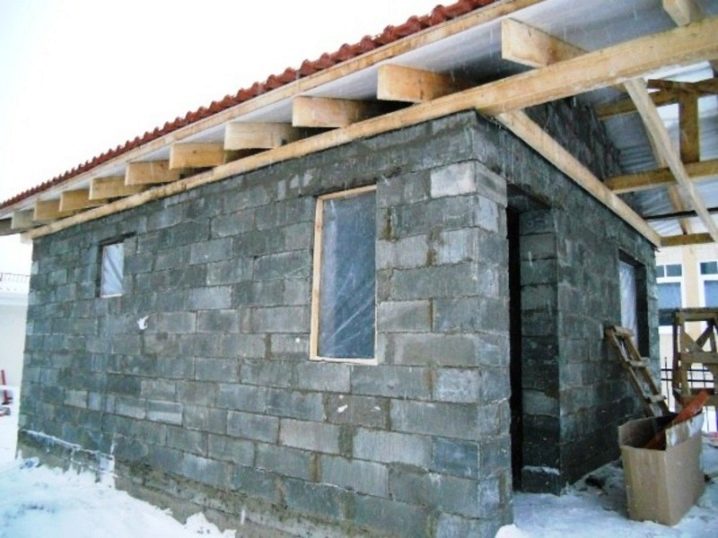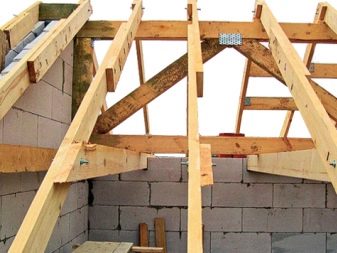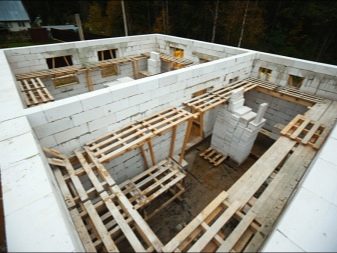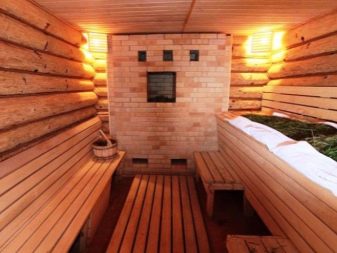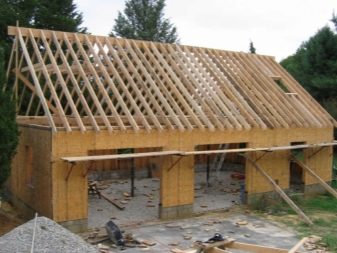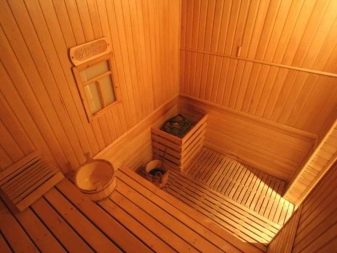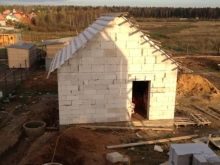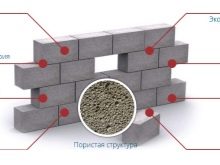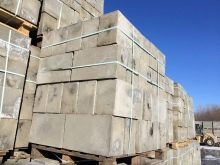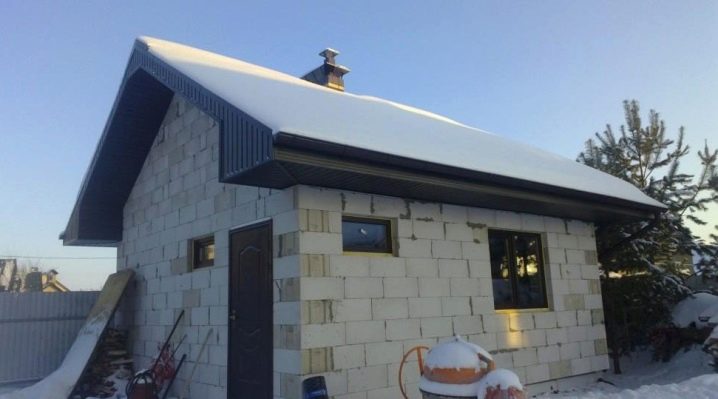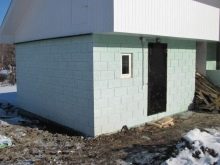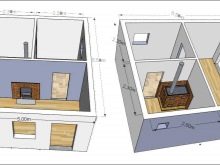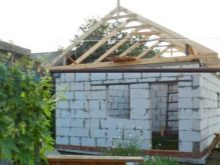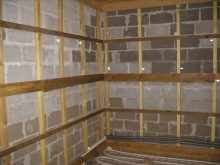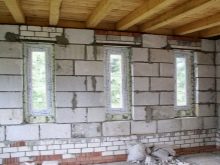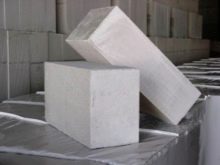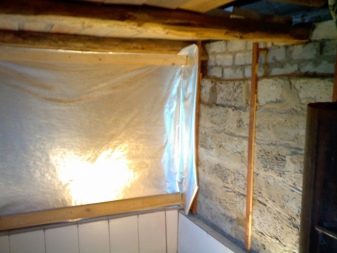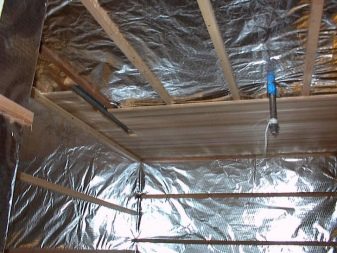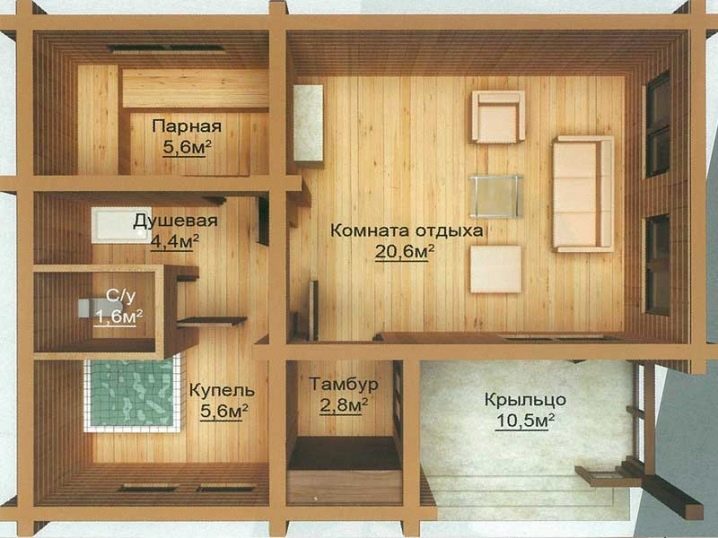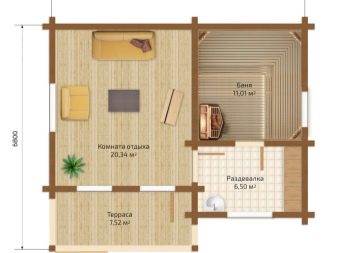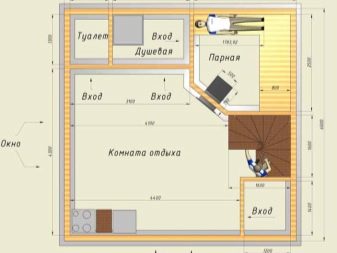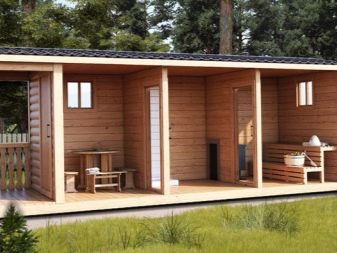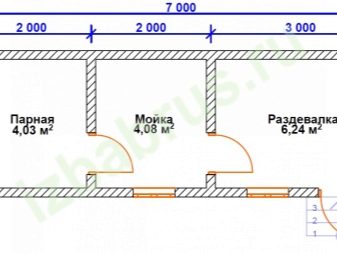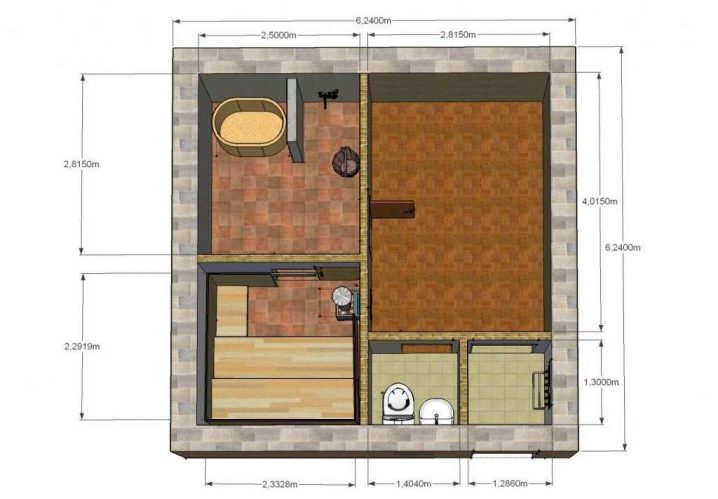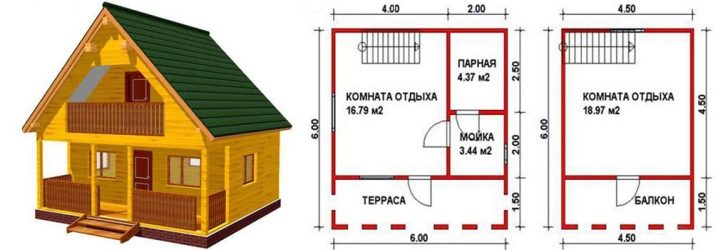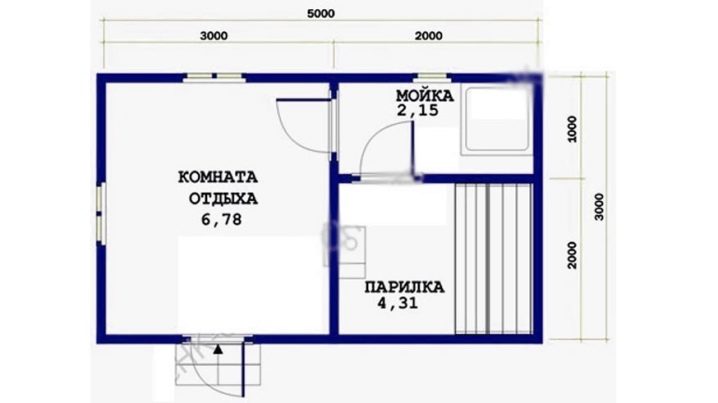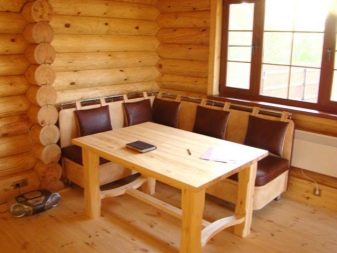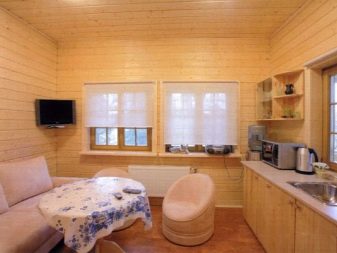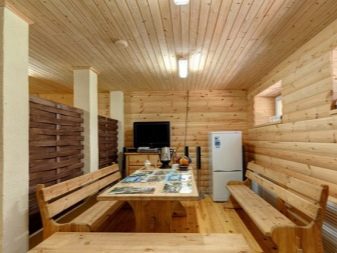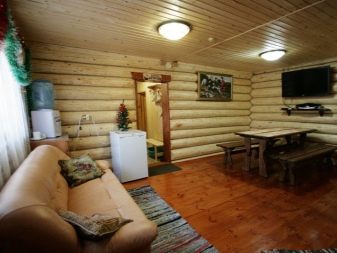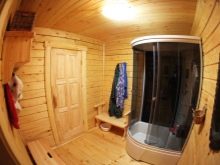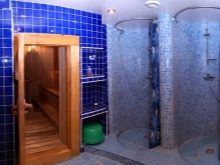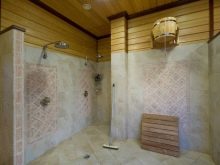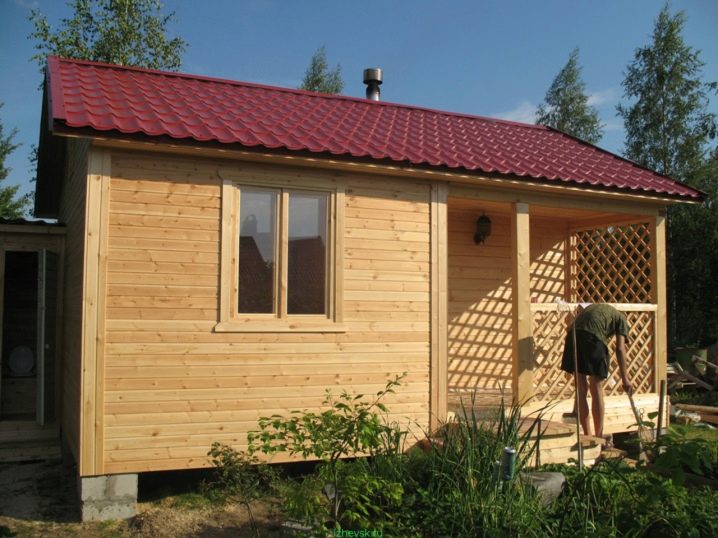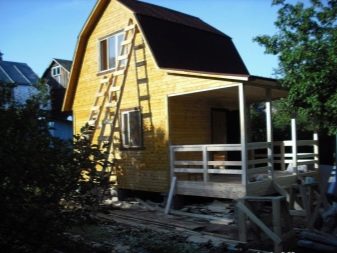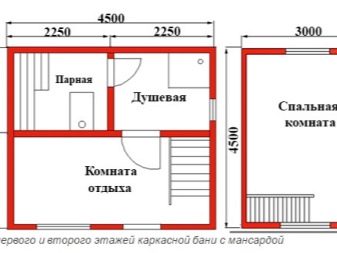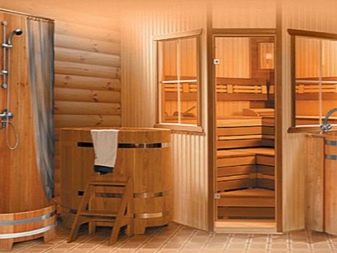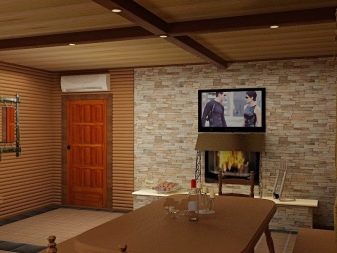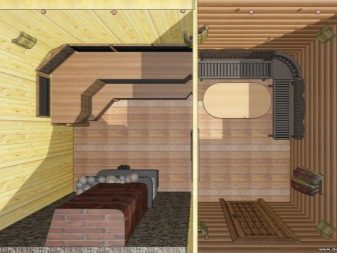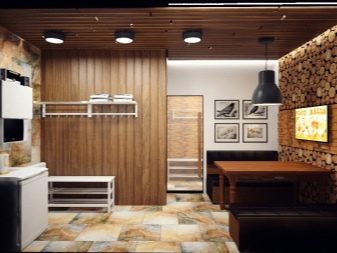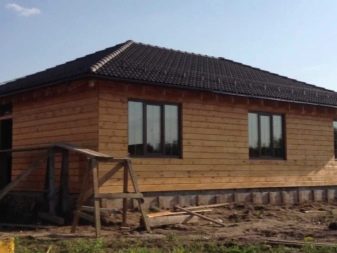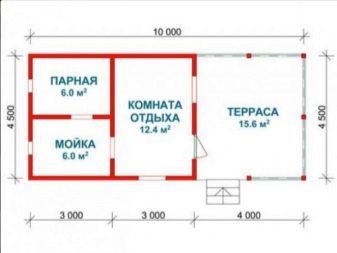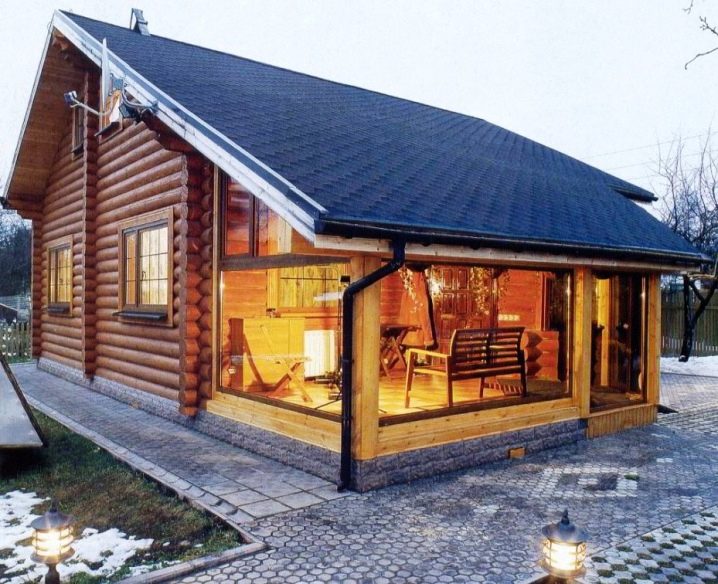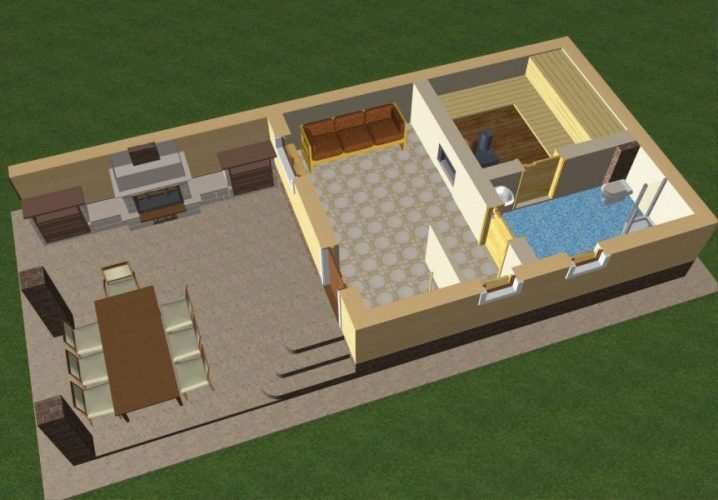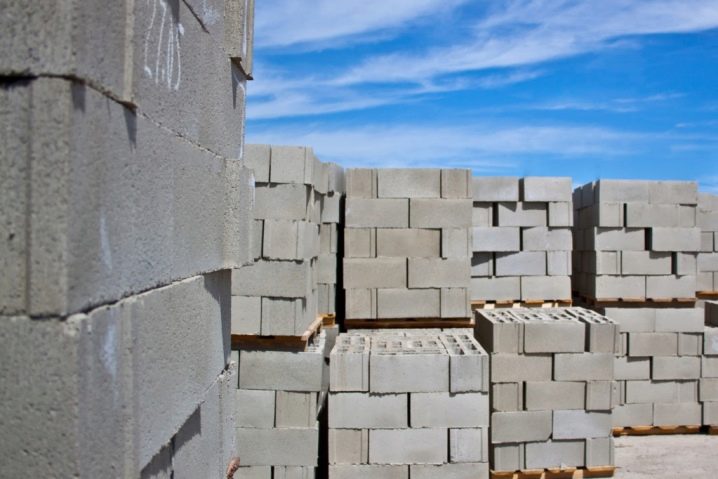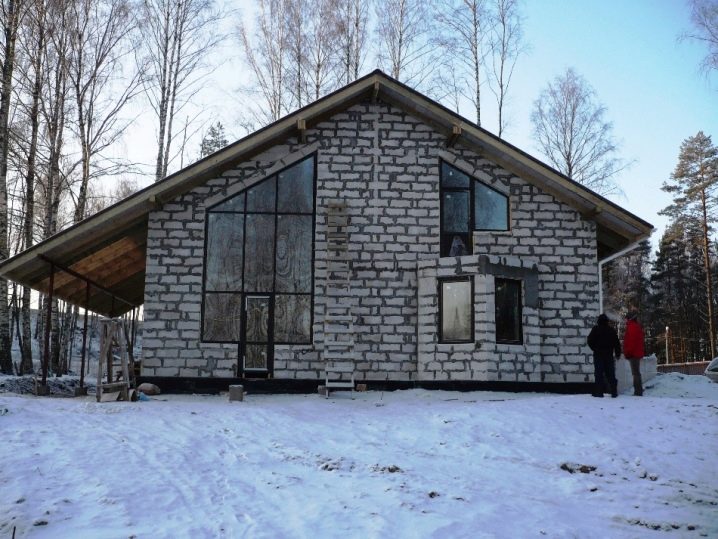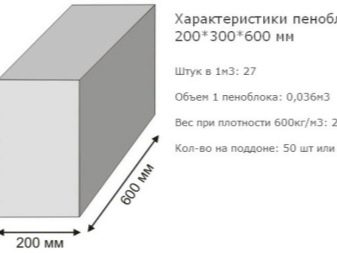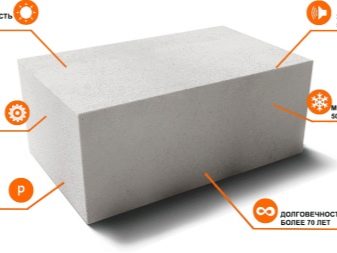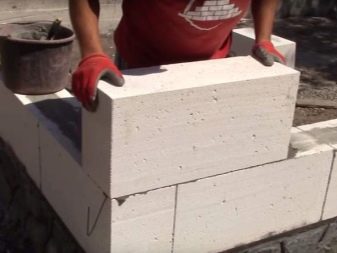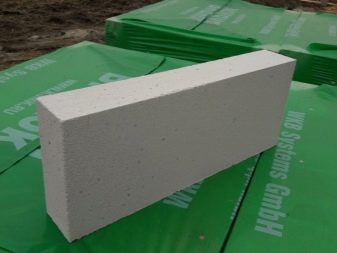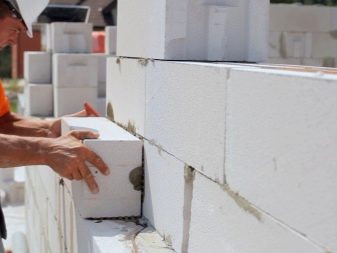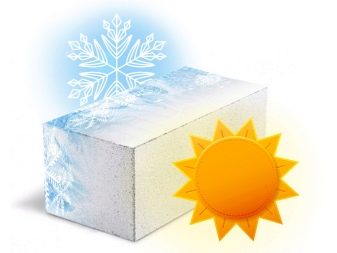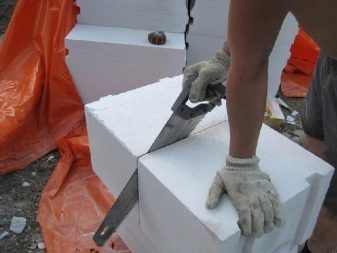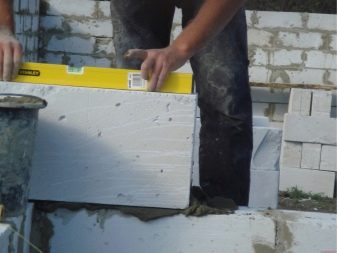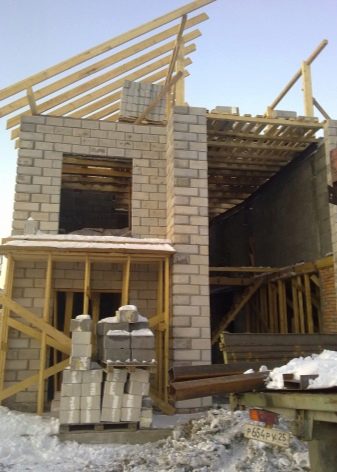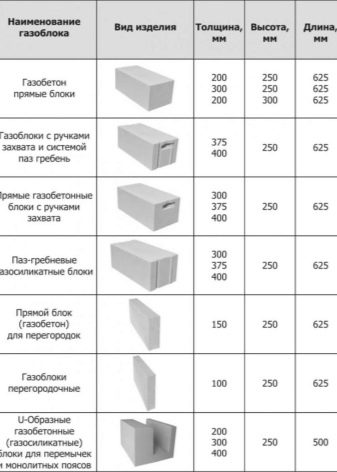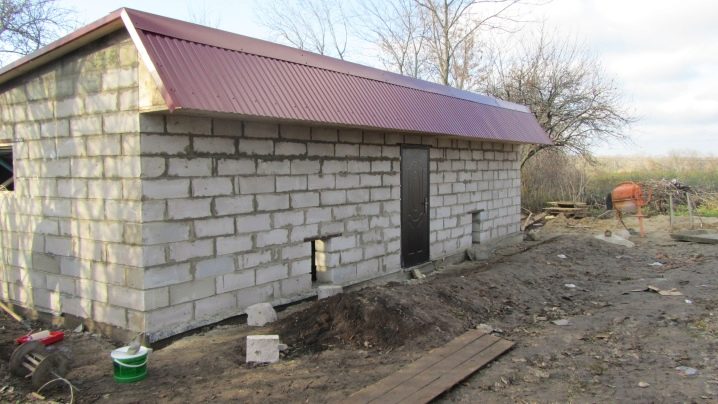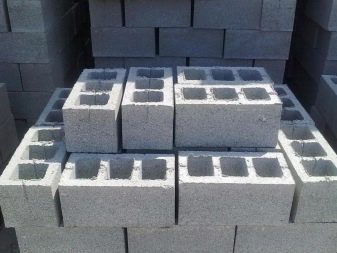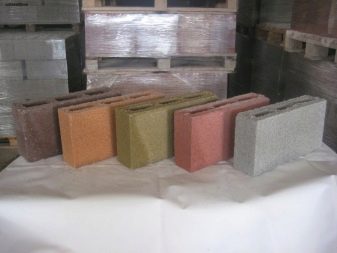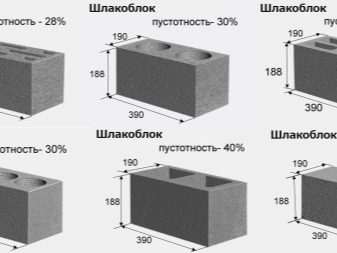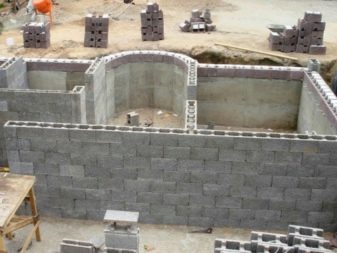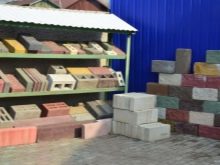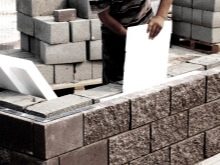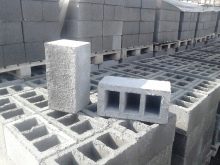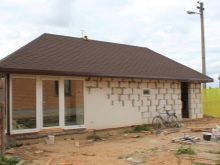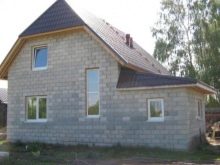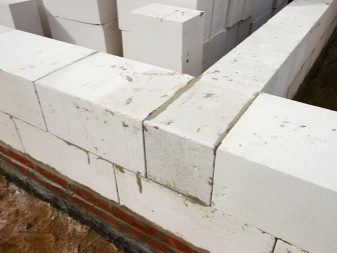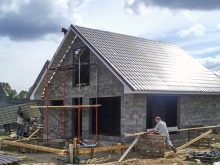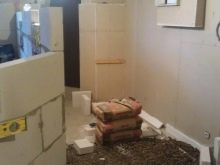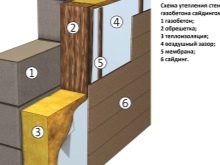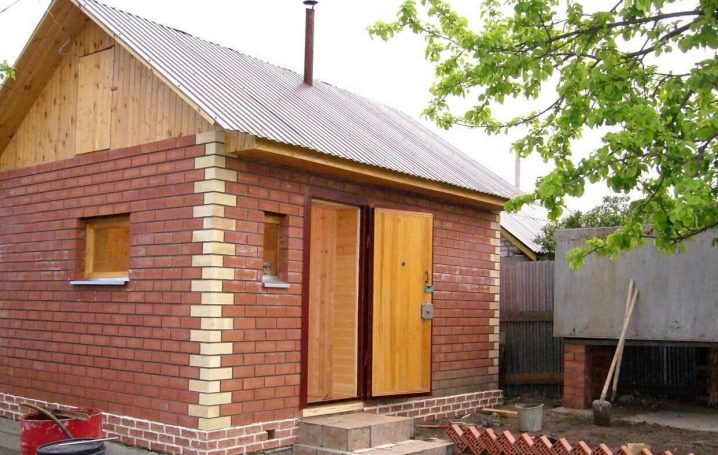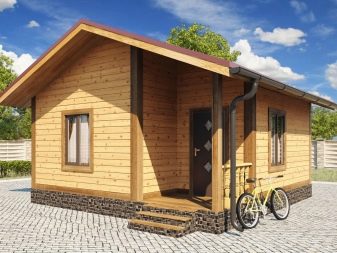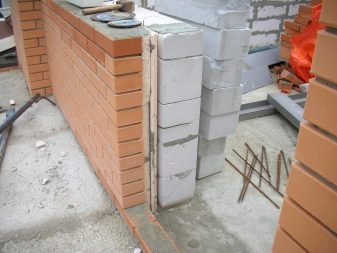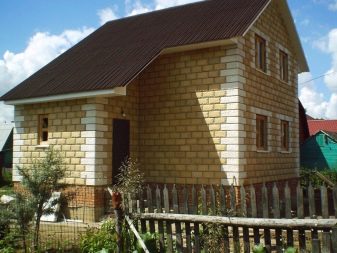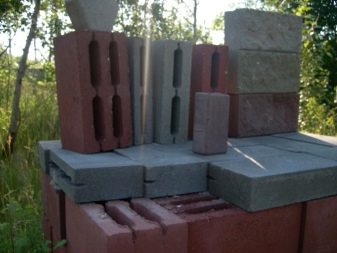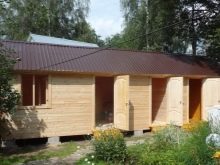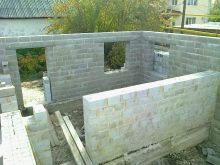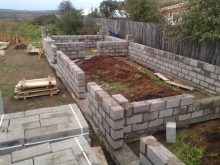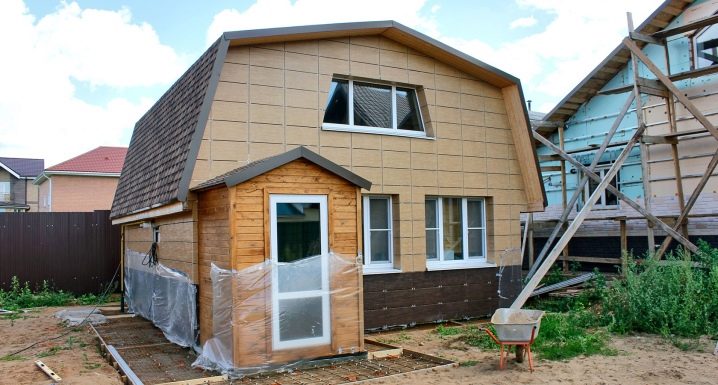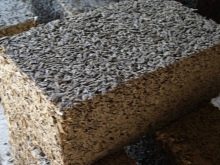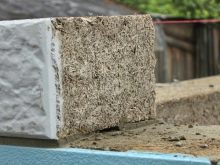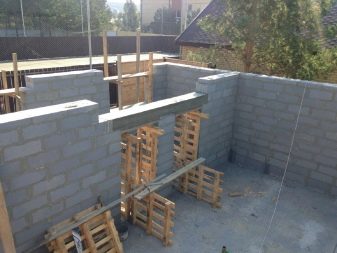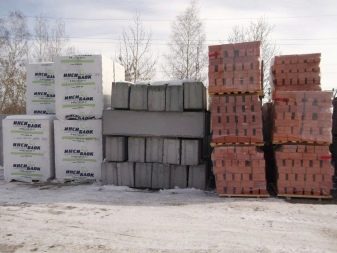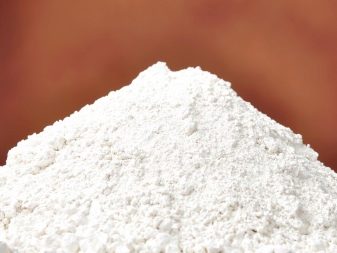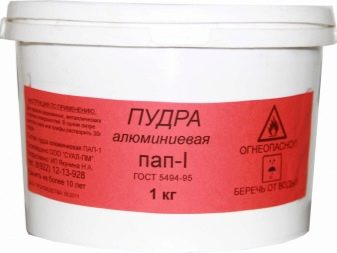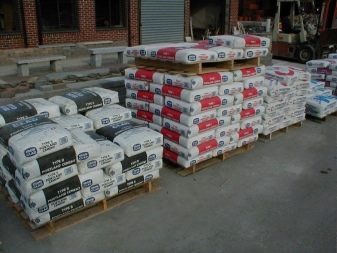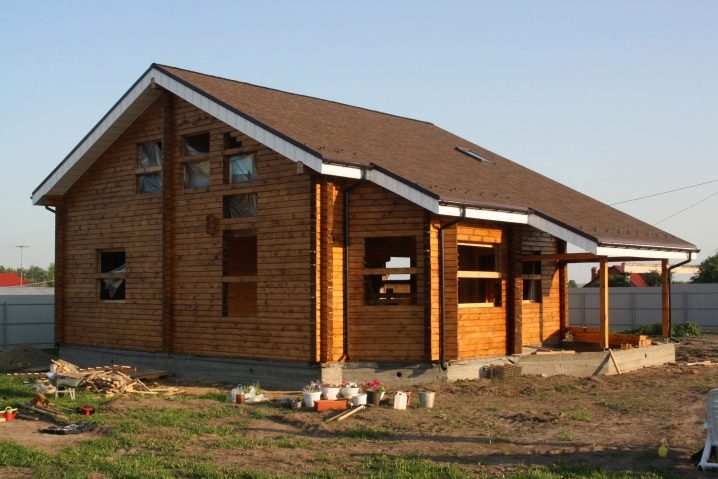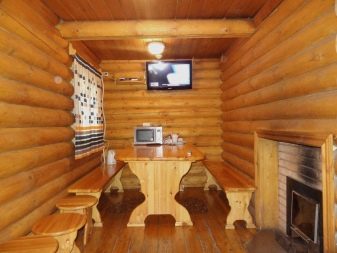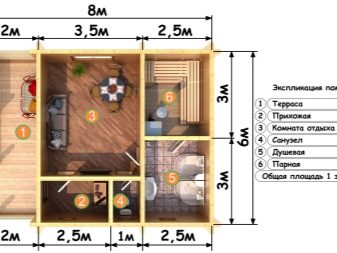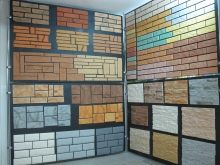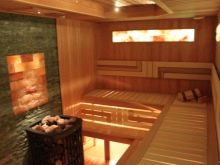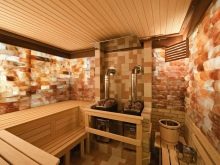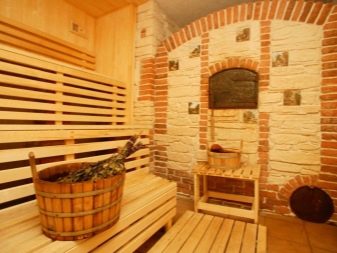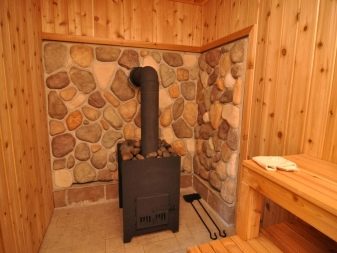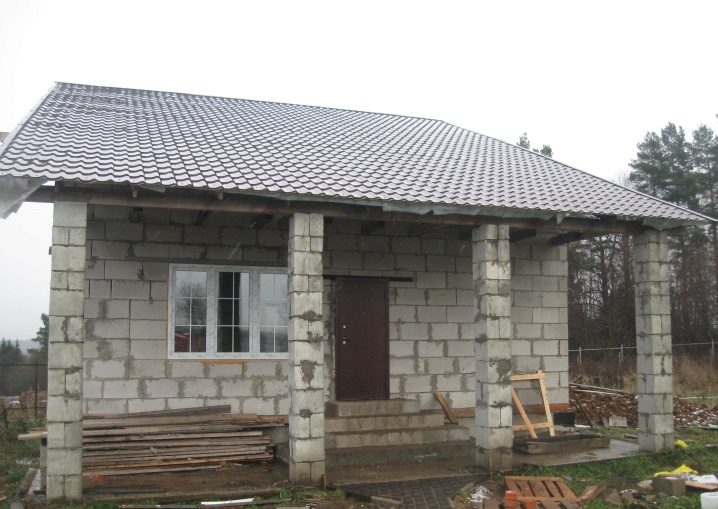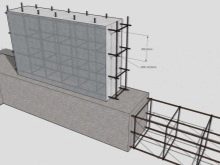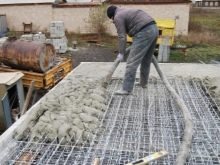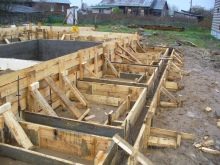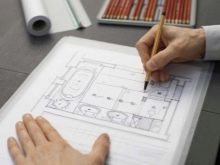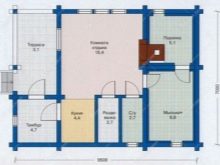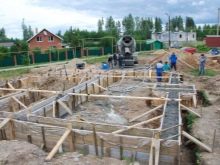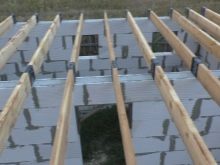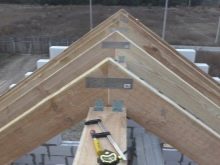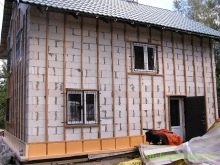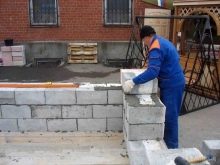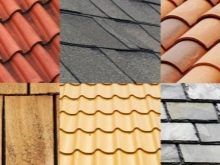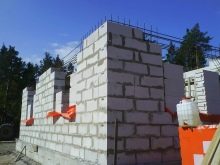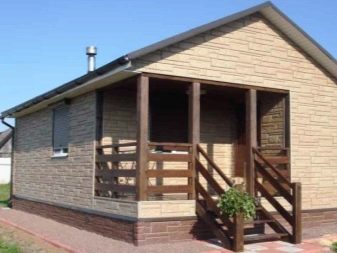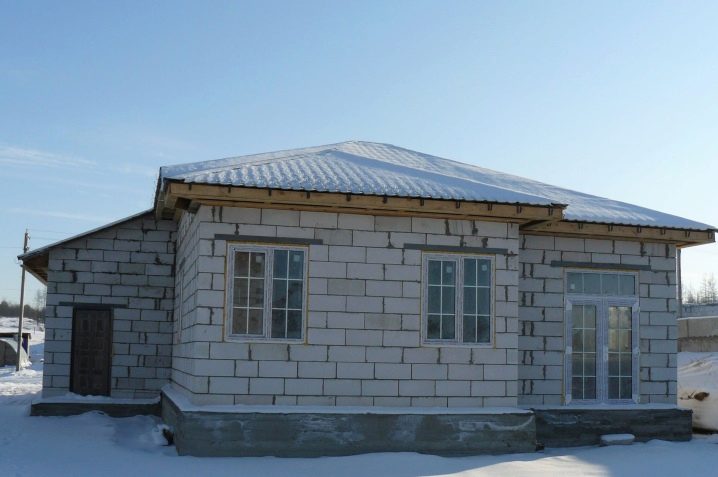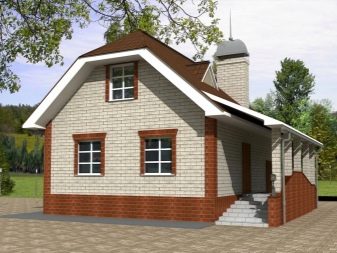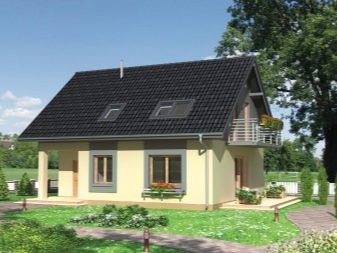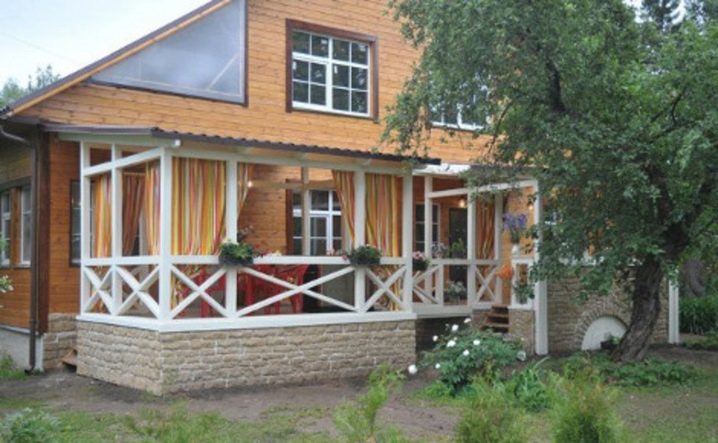Bath of blocks: the pros and cons of design
Bath - is a popular building, which is quite possible to build with your own hands. On the territory of such a building should be warm, comfortable and safe. For this you need to take into account many different nuances. It is especially important to know about the pros and cons of structures made from popular building materials - blocks.
Special features
Bath is not uncommon today. It is built from different materials. Most often, of course, there are wood constructions. However, such structures must be carefully maintained so that they maintain their original appearance and do not rot over time. In addition, wooden baths are fire-hazardous, even if they are treated with special impregnations.
Blocks are an excellent alternative to such demanding materials.
Their use in the construction of baths is not rare. Many owners choose these materials because they have many positive characteristics, and in many ways they are superior to wood.
The main feature of the building blocks is their porous structure. At the same time, the pore sizes (as well as their shape) can randomly change over the entire area of the block. Due to this distinctive characteristic, the mechanical and thermophysical properties of such building materials are not very homogeneous. Because of this, the bath must be very carefully insulated not only from the inside but also from the outside.
It is worth noting that the blocks absorb moisture like a sponge. In the summer season, this feature does not carry anything terrible, but in the winter, previously absorbed water will be exposed to freezing and increase in its volumes. This can lead to sad consequences - the destruction of the blocks. Of course, this problem can be avoided. For this it is necessary to ensure the construction of high-quality waterproofing inside and out.
Advantages and disadvantages
Block building materials have their pros and cons.They need to know if you plan to use the blocks in the construction of the bath. For a start, it is worth considering in more detail what advantages these elements have.
There are several advantages of such material as blocks.
- A structure constructed of blocks will not shrink, such as wood structures.
- The pair of blocks can be built almost immediately after the main decoration.
- The construction of such a bath will take a minimum amount of time.
- It is possible to make all the repair work without the involvement of outside assistance, but experts recommend inviting at least one assistant. So construction will go much faster.
- The final cost of a block bath will be 2-3 times lower than in the case with the construction of a steam room made of wood of exactly the same size.
- Block materials are absolutely safe for human health. There are no hazardous chemical compounds in their composition; therefore, even at high temperatures, they do not emit harmful substances.
- The blocks are relatively lightweight. Thanks to this characteristic, one can significantly save manpower and money on the preparation of high-qualityfoundation.
- Many consumers choose block materials for construction because they do not sustain combustion.
- The bath from blocks is not subject to rotting.
- Blocks are unpretentious in care. They do not need to be regularly coated with antiseptic compounds, as is the case with wooden buildings. Block materials are not susceptible to the formation of mold and mildew.
- Walls built from such materials are breathable due to their diffuse properties.
- Many varieties of blocks, for example, gas silicate, can boast quite good heat and noise insulation properties.
- The service life of quality units is very long.
As you can see, the buildings of the blocks are very durable and wear-resistant.
Currently, many owners choose precisely block materials for the construction of baths (and not only).
However, these products have their drawbacks.
- The blocks absorb moisture, so the bath must be provided with high-quality waterproofing, otherwise the material may simply collapse.
- A block bath requires vapor barrier. This is explained by the fact that condensate almost always accumulates inside the walls of such materials, therefore, there is no need to do without vapor barrier materials.
- Blocks are durable materials, but in this matter they are inferior to brick.
- As part of the popular gas silicate blocks, there are aluminum powder and lime. These components reduce the positive characteristics of the material.
Many problems associated with block baths, it is possible to avoid, if you make their high-quality construction, as well as to take care of hydro- and vapor barrier in advance.
Projects
Currently, the bath is a multifunctional space, which is used not only for washing, but also for a good rest. Proceeding from these goals, modern projects of block baths are being developed. In addition to the main premises (steam room, washing station), this building may include a cozy lounge, a small terrace, an attic or a swimming pool. The size of the latter depends on the dimensions of the structure itself.
The most common are attractive bath projects in which there is a rest room.
As a rule, it also performs the role of a kind of dressing room.
Most often, in its area, the relaxation zone exceeds the rest of the premises.This results from the fact that in a rest room it is necessary to place a table, armchairs or chairs and other necessary pieces of furniture that need enough free space.
The most common types of projects include the following options.
- The budget and best option is considered block 4 m by 6 m bath. With this structure, you can divide all the available space in half using a partition. One of the isolated halves of a building is also possible to divide in half or in proportion. A comfortable and attractive recreation area should be organized in the largest room. As for small-sized rooms, it is worthwhile to arrange the steam room and washing room in them.
When building a block bath with a rest room, be sure to keep in mind that the building must have a vestibule or a small waiting room separating the inside and outside of the building. Thanks to these additions, cold and frosty air will not penetrate the room during the winter season.
Such a bath can be supplemented with an attic and organize a comfortable second floor in it.
Most often, such a decision is addressed in the eventif there are no other living spaces on the land plot. Also, it is not uncommon for such constructions to be addressed when making a plot at a dacha. Attic is a great place to spend the night after staying in the recreation area.
- Another popular and common project is baths with a size of 3 to 5 m. Such buildings are quite spacious. They can easily be steamed at once by several people without feeling embarrassed. In addition, such buildings are often complemented by terraces.
Developing the project of a bath with dimensions of 3 to 5 m, it is necessary to organize several isolated rooms. Without them, the resulting construction will be incomplete.
The first room that a person will enter can be a waiting room. It should be such that it can leave clothes. In the interior of such a bath, you must arrange a small closet in which there is free space for storing all things. Many owners install an additional box in such baths, in which they separately store fuel (wood or coal).
After the waiting room, you can arrange a room for rest.
Even in projects of very small baths it is necessary to provide this room. In the conditions of construction of 3x5 m in the room for relaxation, you can put a small table and several chairs.
Immediately after the rest room should be organized washing or shower. These spaces are necessary so that users of the bath can cool down after the body is steamed out. In these areas should be a simple and uncomplicated interior design. They can accommodate several small benches, a shower and a clean container filled with water. Nowadays, many owners choose one shower cabin for arranging such spaces, refusing the classical washing.
The main room of the bath is a steam room. Here it is necessary to locate the stove, as well as comfortable benches made of wood. All listed rooms must be in any bath. In addition, the building with dimensions of 3x5 m also allows the installation of a small terrace or attic.
- In the bath with dimensions 5x4 You can allocate the main space for a large rest room, and leave the rest of the area for a sink and a steam room, which have approximately the same dimensions.In addition, such a building looks much more attractive if it is complemented by a wide terrace. Similarly, it is possible to design a 4.5 by 4.5 m bath.
- A cozy bath can be arranged and in a small building with dimensions of 3x4 m (or 4x3 m). In this case, the main area can be allocated for a rest room and steam room, and for washing to leave a minimum space. The dressing room in a similar bath also should not be done too large.
Immediately after the waiting room, you can organize a small room for relaxation and put a compact table in it, as well as a couple of chairs. You can do not too large sofa and place in front of him a coffee table. This zone should be separated from the rest of the space by a partition, and then it should be equipped with a spacious steam room. It can be divided by another partition and be equipped in the resulting small corner of the washing space. In such circumstances, it would be best to look narrow shower.
- Large bath with dimensions of 10x4 It will turn out to be issued in any of the formats listed, however, there will be much more free space for each room.In such conditions it will be possible to equip a recreation room equipped with a large number of furniture, which follows a large attic or an area with outdoor gazebos.
It is also permissible to divide the frontal space into a vestibule and a terrace, and after them form a rest room.
Behind it should be put a partition to close the three remaining areas - shower, steam room and bathroom (if you want to install it in the bath).
All bath projects are alike. In any building must be present washing, steam room and a lounge. Additionally, the building can be equipped with a spacious attic or neat terrace. Some owners altogether combine such facilities with a garage. In this case, it is recommended to contact specialists who can competently make the correct drawings of such buildings.
Materials
There are several types of building blocks from which reliable and durable baths are made. Each raw material has special characteristics:
Aerated concrete
Baths are often built from a gas block. This material is very popular and available.
It has many advantages:
- Low weight.A block with dimensions of 30x25x60 cm weighs only 30 kg. If you decide to lay a brick in a similar volume, then you will need 22 elements, the total weight of which will be 80 kg.
- High heat conductivity. Aerated concrete has a cellular structure that provides an excellent heat-conducting effect. Such material perfectly retains heat indoors, and in the hot summer it creates a pleasant coolness.
- Fireproof. Aerated concrete blocks are made of mineral components that are not flammable and combustible. For this reason, such building materials can safely withstand an open flame for 3 hours.
- Frost resistance. Quality gas blocks are not afraid of low temperatures.
- Strength characteristics.
- Efficiency. Due to its size and weight, aerated concrete fits much faster and easier than the same brick.
- Ease of processing. Aerated concrete block can be given almost any shape. To do this, you can use a regular hacksaw. This material is easily cut and drilled.
- Environmental friendliness. Aerated concrete blocks are environmentally friendly.They do not contain toxic substances released under high temperatures.
The thickness of the gas blocks can be:
- 75 mm (suitable for additional warming of rough floors);
- 20-25 mm (used for household and household buildings, for example, garages);
- 375 mm.
There is also a gas concrete brand INSI, which is widely used in the construction of houses.
Such materials are large, so their installation takes not so much time. This material is autoclaved. It is distinguished by seismic resistance and increased strength.
Slag
Slag stones are a building stone, which contains the following components:
- volcanic ash;
- crushed granite;
- sand;
- broken glass;
- expanded clay;
- gravel;
- rubble;
- sawdust.
There are several types of cinder blocks:
- Hollow and hollow. Full-body parts have high strength. Often they make strong foundations, basements and even columns. Hollow parts are used in the construction of walls and partitions inside different rooms.
- Decorative blocks for cladding. These materials appeared on the market relatively recently.They have a decorative coating that is only on one or two sides of the block.
- Partitioning. These cinder blocks are used in the formation of partitions. Such materials provide accurate geometry of floors. In addition, in the process of laying the solution will be significantly saved. Installation of light partition slag stones takes little time.
- Ripped, stabbed. Such blocks also have a decorative coating, but it mimics "torn" or crushed brick. Most often, such materials are used for finishing fences and various buildings.
- Colored. Such cinder blocks are used in the same way as conventional materials. Often they are used in the installation of fences or pillars that perform a decorative function. To achieve the desired shade in the process of manufacturing such cinder blocks - it is enough to add crushed red brick or colored chalk to the mixture.
- The foundation. In another way, this type is called an artificial wall stone. It has excellent strength characteristics and a very long service life.
Gas silicate
The bath can also be built from gas silicate blocks.A distinctive feature of these building materials is that there are voids in their structure, which occupy 50% or less. Due to this characteristic, the blocks have a small weight, and also do not have an impressive load on the foundation.
It is also worth noting that gas silicate blocks have quite good sound insulation and thermal properties, which are provided by the structure with cells.
A bath built of such materials will keep heat for a long time.
Gas silicate blocks are often used in the construction of baths because of such qualities:
- fire safety (non-flammable);
- increased frost resistance;
- easy and quick installation;
- simple processing;
- environmental friendliness;
- increased vapor permeability.
However, it should be borne in mind that this material absorbs moisture, which leads to an increase in its density and strength, and this has a negative effect on the thermal and soundproofing properties of the blocks.
Sand block
Sand blocks (sand-cement blocks) are made by mixing a combination of cement, sand and water. This composition is standard.
Peskobloki are very popular not only because of its efficiency,but also due to its positive characteristics:
- Such blocks have excellent strength characteristics. They are not afraid of negative external factors.
- Peskoblok baths are not subject to the formation of rust and rotting.
- These building materials are made from environmentally friendly and safe components.
- There are voids in these blocks as well, so they have sound and heat insulation properties.
- Almost do not absorb moisture and moisture.
- Have an affordable price.
The disadvantages of cement-sand blocks can be attributed to their low thermal conductivity.
Experts recommend additional insulation of these materials, especially if you use them in the construction of residential premises and baths.
It should be borne in mind that full-bodied sand blocks have more impressive weight than hollow elements. That is why for such building materials it is necessary to prepare the appropriate foundation.
Wood concrete block
Arbolite blocks are often used in the construction of baths. These materials are distinguished by increased strength, which is ensured by an appropriate structure and composition.In addition, arbolitovy elements are not afraid of adverse climatic conditions and various precipitation. They do not absorb moisture and moisture, and are not deformed when in contact with them.
Arbolitovy blocks can be used safely at construction of baths, as they are not flammable - not only cement is present in their composition, but also special chemical impurities that provide these properties.
Many consumers prefer arbolitovy blocks because they have reasonable price, especially if to compare them to a brick.
There are only two types of arbolitovy blocks:
- constructional;
- heat insulating.
Twin block
Twin block is another type of cellular block. It is a high-tech and autoclave. Like other types of similar materials, it is lightweight and does not exert strong loads on the foundation.
The composition of the twin block includes the following components:
- cement;
- lime;
- aluminum powder;
- water.
Working with these blocks is easier than with cinder blocks, as they are easier.
In addition, they are very easy to cut and saw. However, the main disadvantage of such units is their high cost - 3000 per m3.
Design
Many people believe that a bath is a room in which it is impossible to maximize imagination when drawing up an attractive design. In fact, it is not.
In the bath it is quite possible to build a kind of living room with a large table and several chairs, as well as a cozy sofa, in front of which a wall-mounted TV will find its place. This layout can be applied even in conditions of a small structure, if you use small-sized furniture or convertible folding models.
Inside the room can be sheathed with siding or panels that mimic lumber. Such coatings will look very attractive and appropriate in the bath. On their background, you can have wooden furniture, as well as wall and ceiling lamps made of metal, stylized antique.
If you want to bring natural notes to the rest room, then you should take a closer look at the decorative brick - it will look great on the walls in combination with wooden trim.
Some owners complete a similar interior bath real fireplaces or stoves, fireplaces made of brick, stone, or their imitations.
As a rule, a large number of wooden parts are present in steam rooms as well as washing rooms. Here you can also dilute the finish stone. Lighting devices in such spaces often have a concise appearance, which does not attract too much attention.
How to build with your own hands?
A bath of blocks can be built independently, without attracting specialists whose servants are often very expensive.
The main thing is to adhere to the phased construction erection algorithm:
- First you need to make a draft of the future bath.
- Then you should proceed to laying the foundation. To do this, you need to make a markup on the site, dig a trench and make a 15 cm sand pad on its bottom. Pour the sand into the sand and tamp it down.
- Now you need to make a formwork of wood over the trench. Using a level, it is necessary to beat off the upper (horizontal) surface of the foundation on it.
- In the inner part of the formwork should be made of reinforcement framework.
- Next, pour concrete into the formwork.
- Now you can build walls. Especially important is the laying of the starting row of blocks. Using cement-sand mortar, you need to lay out the blocks on the prepared waterproofing.
- The following rows should be put on a special glue.
- At the end of the installation, reinforcement is laid over the walls, and the mauerlat is made.
- After this we must proceed to the construction of the roof structure. To do this, it is permissible to use rafters and lay waterproofing on them.
- They should also be trimmed with a contra-grill, on which the main crate should then be laid.
- After that, it is necessary to proceed to the installation of roofing materials.
- After completing all the above works, you need to finish the resulting bath.
Owner reviews
Currently, block saunas are not uncommon. Such structures are chosen by many owners, as they are more durable and less demanding in terms of care. However, some users claim that wooden buildings still look much better than block ones. But far from all managed with the independent construction of such structures.
Also, people often refuse to build a bath from blocks, referring to the fact that they absorb moisture, which is why they are destroyed. Of course, in this case, the wooden versions do not exceed the block buildings, as they are afraid of moisture even more.In order not to face the deformation of block materials, it is necessary to provide them with high-quality waterproofing.
Consumers were pleased that working with blocks is not so difficult.
For the construction of a bath of such materials, many spent the minimum amount of time. In addition, most of the buyers of such construction cost very little.
Also, users note that any blocks do not emit unpleasant odors in high-temperature conditions.which can not be avoided in the bath. They do not dampen and are not covered with mold or fungus. Even after a long time, block materials do not rot, such as natural wood.
Reviews of block baths are both positive and negative. Of course, much depends on the correct construction of the structure, as well as the quality of the materials used.
Beautiful examples
Many consumers are skeptical of block baths, explaining this by their unsightly design. In fact, such buildings can be made very stylish and attractive not only inside but also outside.
For example, a small building with a triangular roof and steps leading to the waiting room can be trimmed with light-colored siding panels.The lower part of the building is to impose a decorative brick of brown color around the perimeter. In such a bath, blue or purple tiles will effectively stand out.
From foam blocks you can build a beautiful bath with a terrace and decorate it with facade plaster of a dull lemon shade.
Put brick columns at the entrance to the building and install a red tile roof on top that covers the entire building (together with the terrace). Around should plant green plants and flowers. As a result, you get a very spectacular bath.
A bath of blocks can be made concise, but no less attractive, playing on the contrast between the walls and the roof. For example, the exterior trim of block ceilings should be made of white or beige plaster / paint, and for the roof, choose a brown coating. Install in this structure high plastic windows and doors. This will make the bath more stylish and modern.
More information about the bath of aerated concrete and its features, you will learn from the following video.
